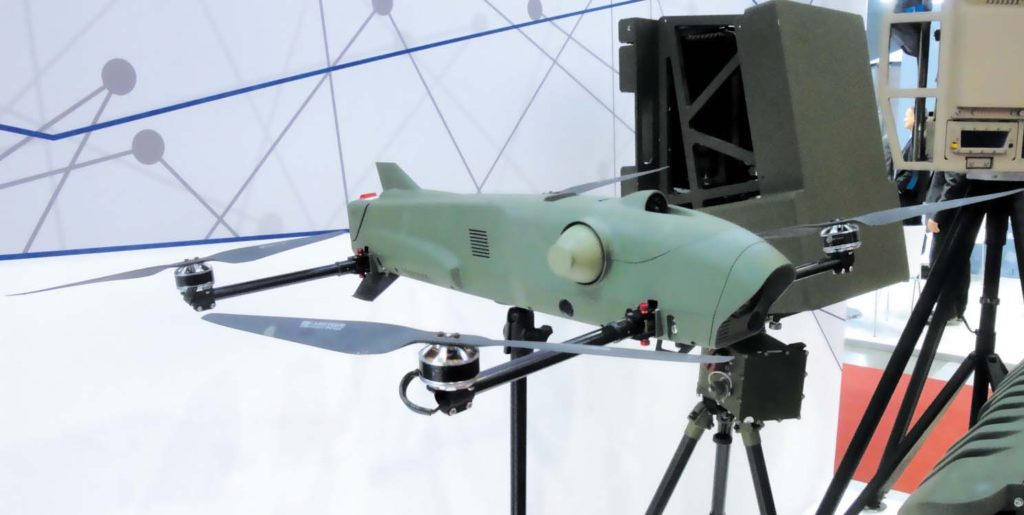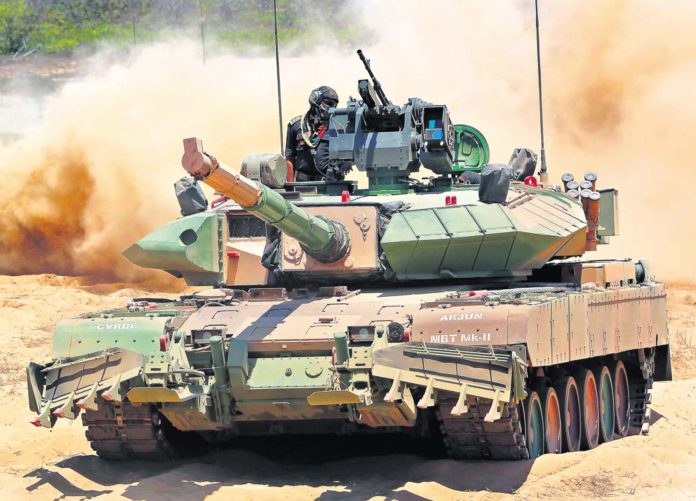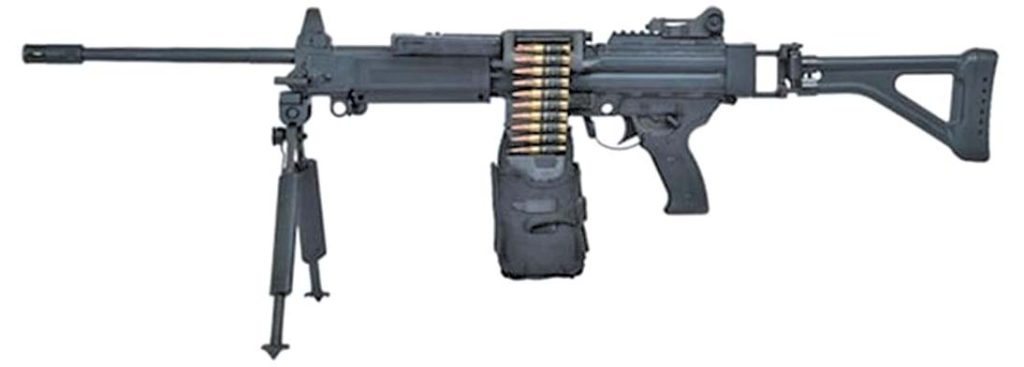The Acquisition Wing of Ministry of Defence (MoD) signed a $118 million (Rs 880 crore) contract with Israel Weapon Industries (IWI), on 20 March 2020, for procurement of 16,479 ‘Negev’ light machine guns (LMG), meeting a long-standing need to modernise standard issue weapons for its armed forces.
Three firms were in the race for the LMG – from Bulgaria and South Korea and IWI of Israel. Finally, Israel prevailed. The modern, state-of-the-art Negev 7.62X51 mm LMG is a combat proven weapon and currently used by several countries around the globe. The Negev LMG with a calibre of 7.62x51mm will replace the in-service INSAS LMG, which has a calibre of 5.56x45mm. The LMG being procured with higher calibre will be more lethal and it will come with belt ammunition, which means that the LMG will have a sustained rate of fire, unlike other LMGs when the magazine has to be changed constantly.
The Negev 7.62×51 mm LMGs, however, will fulfill only part of the overall requirement for well over 43,000 LMGs for the Army, IAF and Navy.
The deal is an effort to ensure that the soldier on the line of control gets the best possible weaponry. Importantly, the LMG will be delivered in a year.
The Army has already received the American Sig Sauer 716 assault rifles. Caracal 816 close quarter battle (CQB) carbines made in the UAE are to be supplied shortly, but there were delays in getting the LMG.
Caracal 816 Carbine
The Indian Army is all set to place orders for Caracal’s CAR 816 close-quarter carbine with from UAE arms firm Caracal, which was declared ‘L1’ in a bid for 93,895 carbines worth $ 553.33 million in 2018. The new carbine will replace the 9mm Sterling carbines which were being gradually phased out. Caracal has to start supplies and conclude deliveries within one year of the inking of the contract.
Caracal carbine is based on the AR-15 lightweight semi-automatic rifle. the rifle weighs 3.4 kg, and uses the 5.56 x 45mm NATO cartridge, and has a firing rate of 750-950 rpm. The 5.56 has a much higher bullet velocity and performs as well as the 7.62mm round used in the AK-series of assault rifles. Since it is much lighter than the 7.62mm or the currently-used Sterling 9mm weapons, it will lighten the Indian soldier’s load.
AK-203 Rifles
In addition, the army will also get modern AK-203 assault rifles in the future. These will not only be for the army but later for the para-military forces. The Korwa ordnance factory in Uttar Pradesh, will progressively manufacture 7,45,000 Kalashnikov AK-203 rifles in a joint venture with Russia. These 7.62x39mm caliber rifles, a derivative of the iconic AK-47, have an effective range of 300 metres.
Background
The Army had first asked for new assault rifles and close-quarter battle carbines for its 382 infantry battalions (with 850 soldiers each) way back in 2005, while the case for the LMGs was initiated in 2009. But the long-drawn procurement projects were repeatedly scrapped due to graft allegations or unrealistic technical parameters as well as the lack of indigenous options for well over a decade.
Then in 2018, the government decided to procure limited quantities of assault rifles (72,400), close-quarter battle carbines (93,895) and LMGs (16,479) for frontline troops from abroad, with the shortfalls to be eventually manufactured in India with lesser technical specifications and parameters at a later stage.
The first contract to be inked in February 2019 was for 72,400 assault rifles from US firm SiG Sauer for Rs 638 crore, under which induction of these 7.62x51mm caliber rifles is almost complete now. These US-origin rifles have an effective range of 500 metres.
The decision was taken after the Pulwama terror attack, on 14 February 2019, in which 40 para-military soldiers were killed. This was followed by the strike on a terror-training camp in Balakot, deep inside Pakistan, by the Indian Air Force on 26 February and an attempted counter-strike by the Pakistan Air Force that failed.

The defence ministry decided that soldiers needed improved weapons, whether it was a rifle, a carbine or an LMG and needed it quickly. In fact, the deal would have been signed but for procedural delays.
Fast Track Procedure
Under the fast track procedure (FTP), the procurement is expedited for critical operational requirements of both the armed forces as well as the Special Forces. This step is taken when there is an unforeseen delay, and which affects the capacity of the forces. Under this there is no need for long and lengthy user trials. There are short demonstrations and these cut the evaluation time.
An Indian team had visited Arsenal in Bulgaria, S&T Motiv in South Korea and Israel Weapon Industries. Besides these three companies, the US-based Sig Sauer had also submitted its bid, however, it later withdrew as it had a huge order for 72,000 assault rifles for the Indian Army under FTP. Bulgaria and South Korea were out of the race leaving Israel Weapon Industries in the race.
Order for Arjun Mark 1A Tanks
After numerous delays and extensive trials, the Indian Army is set to finally place an order for 118 indigenously manufactured Arjun Mark 1-A ‘Hunter Killers’, which will have all-weather capability and better fire power and stability than the Arjun main battle tank (MBT).
Arjun Mark 1A, which weighs 68 tonnes and features a 120mm main gun, has cleared all tests and cost negotiations with its developer, the Defence Research and Development Organisation (DRDO), were concluded.
Chennai-based Combat Vehicles Research and Development Establishment (CVRDE), a DRDO lab, has developed the tank.
Balamurugan said the first tank will be rolled out from the factory within 30 months of the order of intent (order) being placed.
He explained that four upgrades were made to the firepower of the tank, besides other developments, including new transmission systems. The Mark 1-A includes an improved gunner’s main sight, integrated with automatic target tracking. This would enable the tank crew to track moving targets automatically, and engage them even when Arjun is on the move.
The Arjun Mk-1A’s gun is controlled by a computerised integrated fire control system, giving the tank has a high first round kill capability. The gun’s day-and-night stabilised sights, coupled with automatic target tracker, guarantee accurate engagement even in dynamic conditions.
Other than the conventional fin stabilised armour piercing discarding sabot and high explosive squash head ammunition, the Mark 1-A comes with thermo baric and penetration-cum-blast ammunition.
Loiter Munition System
The Indian Army has initiated the procurement process for 100 loiter munition systems and has set September 2020 as the target for issuing a tender. The required quantity is to be delivered within 18 months of a contract.
A loitering munition (like a suicide drone or kamikaze drone) is a weapon system category in which the munition loiters around the target area for some time, searches for targets, and attacks once a target is located. It has faster reaction time against a concealed or hidden target that emerges for short periods without placing high-value platforms close to the target area, and also allow more selective targeting as the actual attack mission can be aborted.
According to a Request for Information (RFI) issued by the Infantry Directorate, on 6 March, the loiter munitions are being sought for use by infantry men to execute “pinpoint strikes with legal munition” after performing “surveillance tasks by day and night” in all weather conditions using a man-portable platform.
The loiter munition should operate with flight endurance of at least 30 minutes and range not less than 15 km. The system should have the capability to loiter above the target, detect targets, enable real time decision making and carry out destruction of the target. The system should be light weight, man portable and easy for a soldier to carry and operate.
The loitering munition system should be able to operate up to an altitude of 4500 meters (AMSL) and not less than 300 meters (AGL). It should be equipped with a warhead to destroy personnel and soft-skinned targets. The loitering munition system should also have anti-jamming and anti-spoofing capability.
The total weight of the loiter munition system (loiter munition and ground control station) should not more than 20 kilograms and should be operable with one/two-person(s).
The other requirements are:
• It should be controlled by a ground controller with a data link established with the loiter munition system.
• The ground control station should be able to control multiple loiter munitions. The loiter munition system should be able to operate up to an altitude of 4,500 meter (Above Mean Sea Level) and not less than 300 meter (Above Ground Level).
• The loiter munition system should have anti-jamming and anti-spoofing properties.
• The loiter munition system should be able to be packed and carried by not more than two personnel including the sub-system such as GCS and data link.
• It should be able to be air dropped placed on a platform system and flexible enough to slither down man packed from helicopters.
• The loiter munition system should fulfill relevant EMI/EMC requirements as per Military Standards 461E.
Loitering weapons first emerged in the 1980s for use in the Suppression of Enemy Air Defenses (SEAD) role against surface-to-air missiles (SAMs), and were deployed for the SEAD role in a number of military forces in the 1990s. Starting in the 2000s, loitering weapons have been developed for additional roles ranging from relatively long-range strikes and fire support down to tactical, very short-range battlefield systems that fit in a backpack.



















